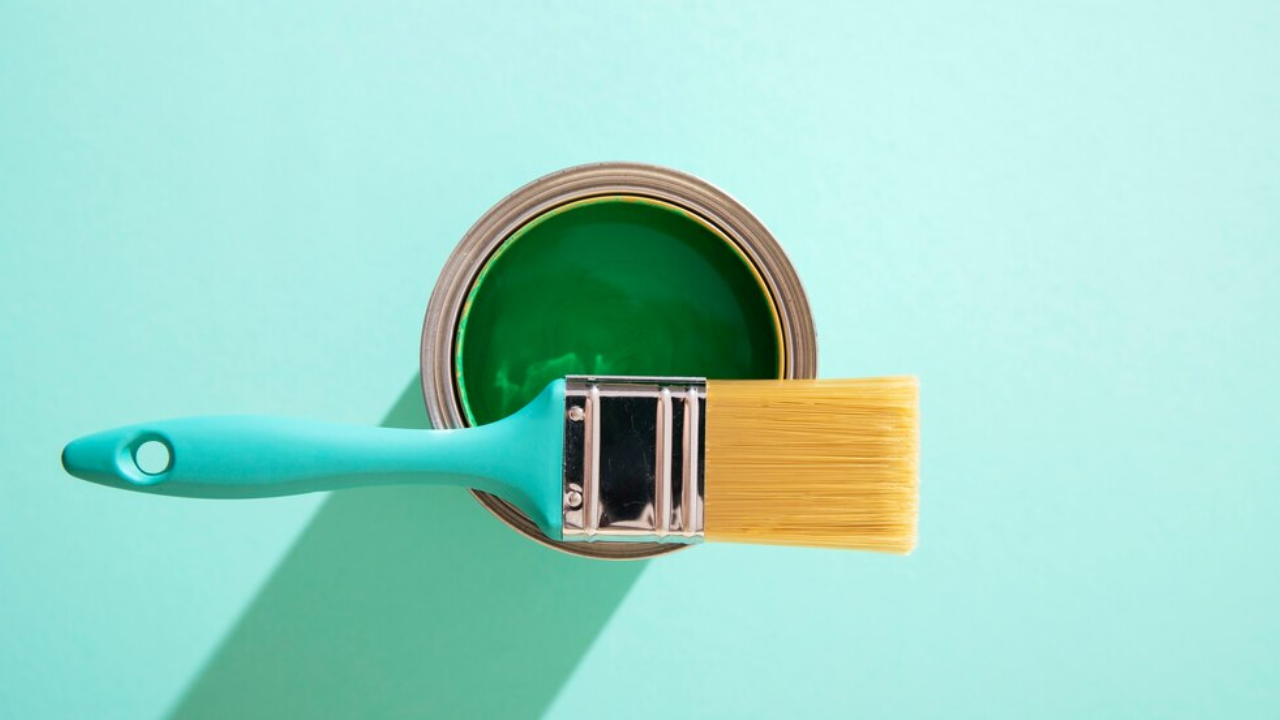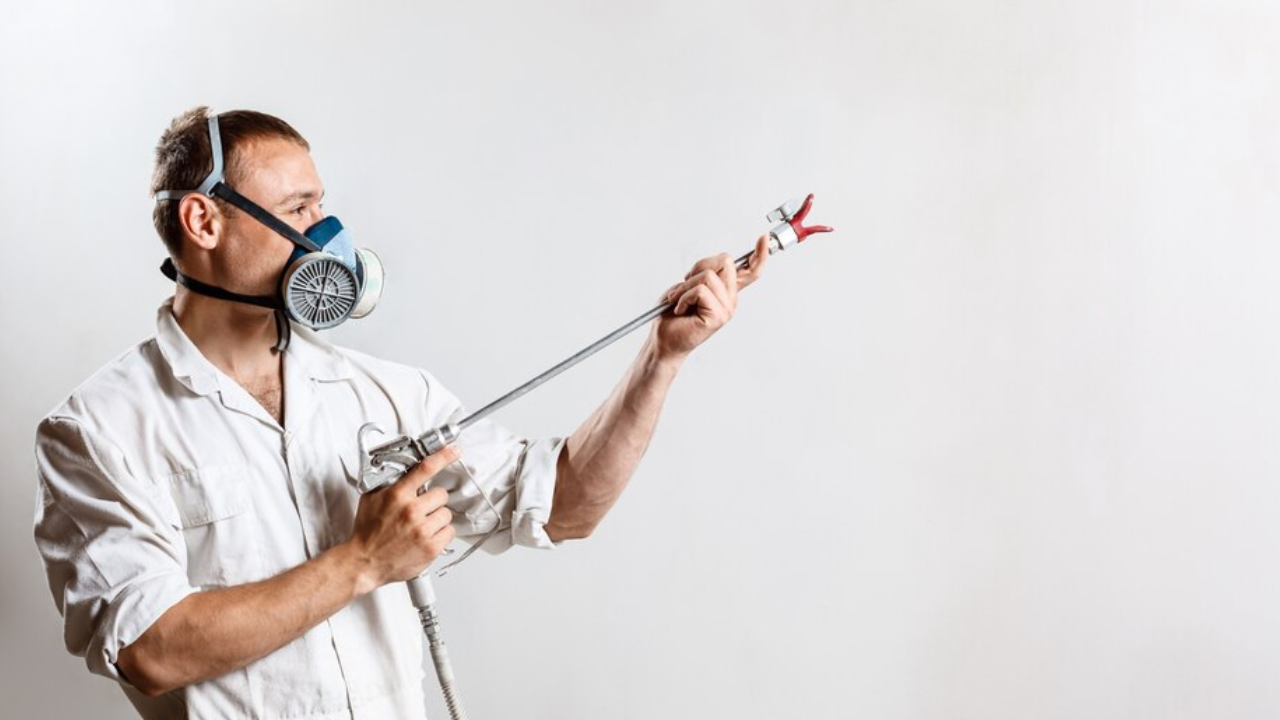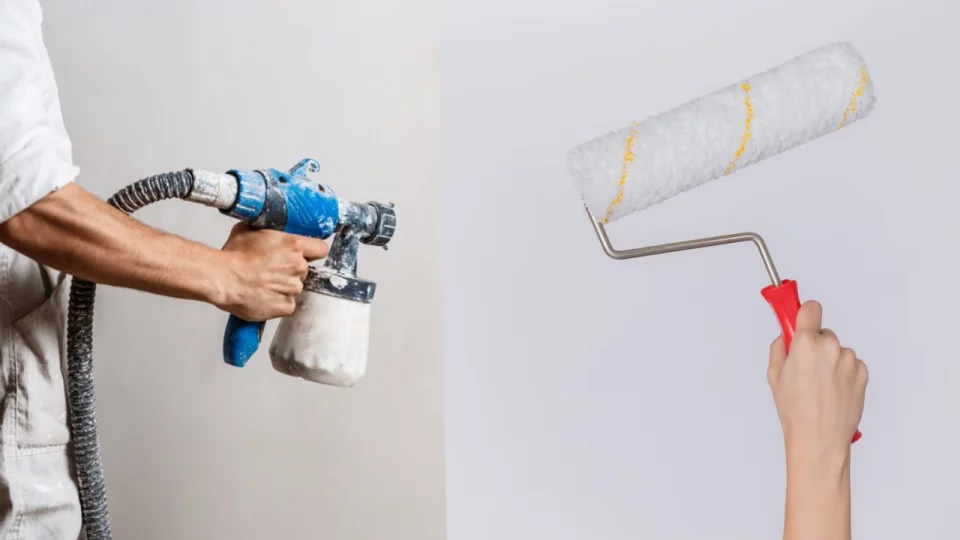The process of painting, whether for walls, furniture, cars, or intricate art pieces, involves significant decisions. One of the most pivotal choices is the method: painting by hand using brushes or rollers versus using a paint spray gun.
Each approach offers unique advantages and challenges, suited for specific situations, skill levels, and desired finishes. Choosing between these two methods depends on factors such as project scope, desired outcome, available budget, and time constraints.
Table of Contents
An Overview of Hand Painting and Spray Painting
Before comparing the two methods, it’s helpful to understand what each entails. Painting by hand involves applying paint manually with tools like brushes and rollers. This approach is centuries-old, adaptable to both artistic endeavors and large projects, and is associated with meticulous detail and a high level of control. Painting by hand also requires greater time investment, making it a labor-intensive but often rewarding method.
On the other hand, spray painting uses a machine that atomizes paint, dispersing it as a fine mist onto a surface. The result is a quicker, smoother finish, with even coverage and fewer visible brush or roller marks. Spray guns are commonly used in automotive, furniture, and industrial painting due to their efficiency and speed, although they require specific setup and safety precautions. Each technique has a unique application and set of skills, so let’s break down the advantages and disadvantages to help you understand which may be more suitable for your project.
Pros and Cons of Painting by Hand

Pros:
- Precision and Control: Hand painting offers a high level of precision, which is especially useful for projects requiring intricate details. Brushes and small rollers allow the painter to apply controlled strokes and achieve desired textures.
- Versatility: Painting by hand is versatile across various surfaces, shapes, and textures. Whether it’s rough wood, curved ceramic, or intricate walls, hand painting can accommodate surfaces that might be challenging for spray guns.
- Reduced Equipment Cost: Compared to a paint spray gun, painting by hand is often more cost-effective initially. Brushes and rollers are generally affordable, widely available, and do not require special setups.
- Suitable for Small or Detailed Projects: For smaller projects or those needing fine details (like artwork or trimming), hand painting is usually preferable. This method allows painters to pay attention to specific areas without extensive masking or protection.
- Eco-friendly and Less Wasteful: Since it involves direct application, painting by hand typically produces less paint waste than spray painting. This can be beneficial for the environment and reduce paint costs over time.
Cons:
- Time-Consuming: One of the primary drawbacks of hand painting is the time investment required, especially for larger projects. Applying paint by hand is slower than spraying, particularly for extensive or repetitive surfaces.
- Labor-Intensive: Painting by hand demands physical effort, and maintaining consistency across large areas can be physically tiring. It also requires steady hands and attention to avoid inconsistencies.
- Potential for Visible Marks: Without careful application, hand painting can leave brush or roller marks, streaks, and visible overlapping. These imperfections can reduce the overall quality of the finish.
- Requires Skill for High-Quality Finish: While painting by hand allows for control, achieving a smooth, professional finish can be challenging, especially for beginners. Uneven coats and drips are common issues that require experience to avoid.
Pros and Cons of Using a Paint Spray Gun

Pros:
- Speed and Efficiency: A paint spray gun covers large surfaces quickly, making it ideal for projects where time is a constraint. It’s efficient for big tasks like painting entire walls, fences, or cars, as it minimizes the number of strokes or passes needed.
- Uniform Finish: Spray painting delivers an even, smooth layer of paint without the risk of brush marks, creating a consistent and professional appearance. This is particularly beneficial for glossy or metallic paints that require uniformity.
- Better Coverage in Hard-to-Reach Areas: Spray guns can reach areas that might be difficult with a brush, such as corners, grooves, and crevices. This feature makes them popular for projects like painting cabinetry, furniture with intricate designs, or cars with complex contours.
- Adaptability Across Paint Types: Spray guns are often compatible with various paint types, including latex, enamel, and even stains. This versatility allows users to work with a range of materials and finishes on different surfaces.
Cons:
- Higher Initial Cost and Maintenance: While spray guns offer speed, they require a larger upfront investment than brushes and rollers. Additionally, maintenance can be demanding as the equipment needs cleaning and care to avoid clogging.
- Requires Ventilation and Safety Precautions: Spray painting disperses fine particles of paint into the air, necessitating adequate ventilation, protective gear (like masks and goggles), and sometimes outdoor space. Indoor projects with spray guns can be risky if proper safety measures aren’t followed.
- Paint Wastage: Although efficient in terms of time, spray painting can result in paint wastage due to overspray. Not all paint particles adhere to the surface, which can make spray painting less eco-friendly and more costly for certain projects.
- Learning Curve and Potential for Overspray: Mastering a paint spray gun can be challenging for beginners. Inexperienced users may encounter overspray issues, resulting in uneven coverage or unintended areas getting painted. Proper technique and distance are essential for optimal results.
Comparing Cost Considerations for Each Method
Painting by Hand generally has a lower initial cost. Brushes, rollers, and other supplies are affordable and often reusable, reducing ongoing expenses. However, labor costs may increase if professional painters are hired due to the extended time required for manual painting.
Using a Paint Spray Gun requires an initial investment in the equipment itself, plus any compatible paints and potentially an air compressor. While the upfront cost is higher, the time saved in completing the project can offset this expense. For recurring projects or large-scale tasks, a spray gun can be a more economical long-term choice.
Time Efficiency and Productivity: Which Method is Faster?
For larger surfaces, a paint spray gun is undoubtedly faster. Its ability to cover vast areas in minimal time makes it ideal for projects where deadlines are tight. Painting by hand, though slower, allows for breaks between sections and offers more control over pacing, which might be preferable for smaller or more detailed tasks.
A study by a painting trade association found that using a paint spray gun can be up to 60% faster than hand painting, particularly on flat, smooth surfaces. However, this speed advantage decreases when dealing with surfaces that require substantial masking or protection against overspray.
Suitability for Different Project Types
Hand Painting tends to be more suitable for:
- Interior Walls: Especially if only minor areas or accents are being painted.
- Furniture Refinishing: Hand painting provides control over detail work and finishes.
- Art and Craft Projects: Small, intricate designs benefit from hand painting.
- Touch-Ups and Maintenance: Easier to apply in isolated areas without needing to cover large sections.
Spray Painting is often ideal for:
- Automotive and Industrial Projects: Large surfaces require uniform coverage.
- Outdoor Fences, Sheds, and Walls: The speed of spray painting is beneficial outdoors.
- Furniture with Detailed or Curved Surfaces: Spray guns cover hard-to-reach areas easily.
- Large Interior Spaces: For a quick, even finish across vast areas, spray painting is advantageous.
Choosing the Right Paint Types for Each Method
Hand painting works well with oil-based and water-based paints, allowing more time for detail. Thicker paints also perform better with brushes and rollers, as they adhere better and show minimal brush marks.
Spray guns, however, work best with thinned paints. The viscosity of the paint needs to be suitable for the spray mechanism to avoid clogging or uneven dispersal. Many spray guns are compatible with latex, enamel, and specialized automotive paints when properly thinned.
